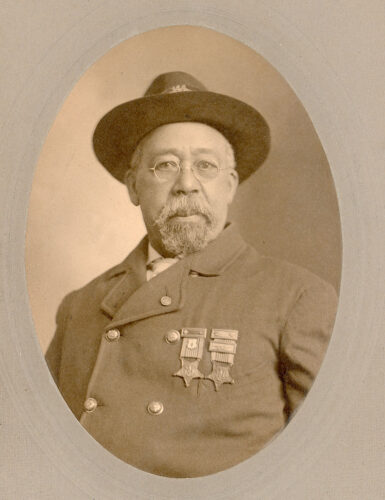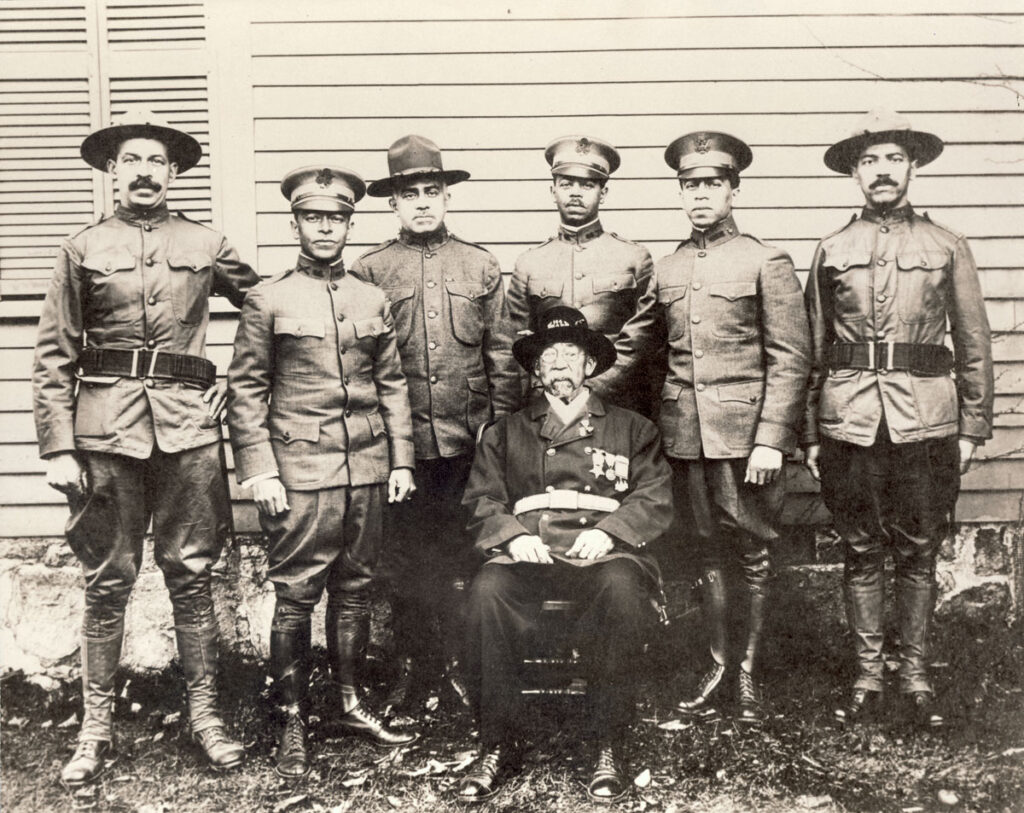Diary of a Contraband
The Civil War Passage of a Black Sailor

William B. Gould’s Civil War diary chronicles his daily life in the United States Navy from September 27, 1862, to his discharge three years later, on September 29, 1865. One of the only known diaries of an African American sailor in the Civil War, this document describes his service and life as a sailor on the U.S.S. Cambridge and later on the U.S.S. Niagara, which took him from the northeastern U.S. to Great Britain, Holland, Belgium, Spain, and Portugal.
This site is intended to complement William B. Gould IV’s book about his great-grandfather, Diary of a Contraband: The Civil War Passage of a Black Sailor. Here the reader can view the diary itself, and see aspects of it that cannot be replicated in a typescript or book. The reader can also view a photo gallery of images related to the diary, William B. Gould, and his family.
The diary consists of two books plus some forty unbound pages that appear to have once been part of another book. All of the extant material is provided here in chronological order. There are only two significant hiatuses, one for the period May-October 1863, when he is hospitalized with the measles, and the other for the late September 1864-early February 1865 period, which appears to be a section that was somehow lost.
Although WBG kept his entries chronologically on a day to day basis, the order that some of the sections of the diary appear in the original books can be somewhat confusing. WBG’s first entries from Sept. 27, 1862 to May 3, 1863 are written in the final pages of the first book, with the May 3 entry falling on the last page of the book. At this point, WBG becomes ill with the measles and presumably stops keeping daily entries. The diary resumes on Oct. 13, 1863, the day he is transferred from the Chelsea Naval Hospital to the receiving ship Ohio and then to the U.S.S. Niagara. On this day, WBG begins a second book, which runs uninterrupted from Oct. 13, 1863 through Sept. 4, 1864. Opposite the Sept. 4, 1864 entry, on the last page of the book is WBG’s drawing of the C.S.S. Stonewall. The next surviving entry is an apparent continuation of a February 4, 1865 entry. The first part of the Feb. 4 entry, as well as the preceding entries (from Sept. 4, 1864 onward) have been lost. The partial entry begins the first of about forty loose pages that were probably once part another book whose binding was destroyed. As is clear from the scans provided here, these pages are in the most fragile condition and have deteriorated significantly around the edges so that some of the text has been lost. The last of these unbound pages contains WBG’s May 26, 1865 entry. At this point, WBG returns to the first book (the book whose last 50-odd pages contain the beginning of his service from Sept. 27, 1862 – May 3, 1863). He writes his May 27, 1865 on the first page of the book, and continues through Sept. 29, 1865, the date of his discharge from the Navy at the Charlestown Naval Shipyard. Thus, the 45 or so pages at the beginning of the first book contain the entries for the very end of his service, while the last 50 or so pages contain his entries for the very beginning of his service.
To complicate matters further, between the two sections at the beginning and the end of the first book, are a large number of blank pages and a few pages of notes. Immediately following last diary entry on Sept. 29, 1865, are two pages of trade notes detailing formulas for mixing different types of cement, clay, etc, which were undoubtedly written after the war. In the middle of the book, surrounded on both sides by a number of blank pages, are a two undated entries, “Notes by WBG” and “The Negro his Friends and Foes.” These items are written from the bottom line of the diary to the top, or upside down. Although their placement in the diary makes dating them difficult, they may well have been written by WBG before the war.
With Diary of a Contraband: The Civil War Passage of a Black Sailor, William B. Gould IV has delivered something both inspirational and of real consequence to the world of American history. ...the reader is able to look back over 140 years and view the life of a slave who seized his freedom and embarked on a journey rich in historical significance and overflowing with personal drama and danger.
from the Foreword by Senator Mark O. Hatfield
The Book

The heart of this book is the diary of the author’s great-grandfather, William Benjamin Gould, which he kept during his service in the United States Navy in the War of the Rebellion between 1862 and 1865. William B. Gould escaped from slavery in Wilmington, North Carolina, in the fall of 1862, and boarded the U.S.S. Cambridge off Wilmington within a day of his escape. One of the only known diaries of an African American sailor in the Civil War, this fascinating document discusses his service and life as a sailor on the Cambridge and later on the U.S.S. Niagara, which took him from the northeastern U.S. to Great Britain, Holland, Belgium, Spain, and Portugal.
In a tone often both understated and sardonic, the diary includes observations about slavery, race relations, the War of the Rebellion itself, the colonization of blacks, and the pardons given to Confederates after the war, as well as numerous references to meetings and correspondence with those who were trying to lobby for and promote a good Reconstruction policy in the South (many of William B. Gould’s associates became prominent in Republican politics in North Carolina at the war’s conclusion). Though not particularly introspective, the diary also speaks of loneliness at sea, particularly his frustration over lack of correspondence from Cornelia Williams Read, whom he married within two months of his discharge from the Navy in Massachusetts in late 1865. It also speaks sometimes about personally difficult or embarrassing circumstances, and sometimes about gaiety, meetings, and concerts, and the people who attended them.
Introductory material by William B. Gould IV provides background on William B. Gould’s life and history, and an epilogue describes the latter’s life in Dedham, Massachusetts from 1871 through 1923 as a skilled tradesman, mason, and contractor, his role as a founder of the Episcopal Church of the Good Shepherd in Dedham, and, in particular, his role as a leader in the Grand Army of the Republic in Massachusetts.
Buy Diary of a Contraband
Stanford University Press Amazon

